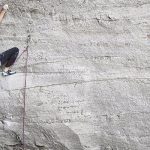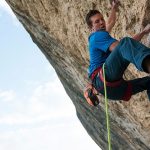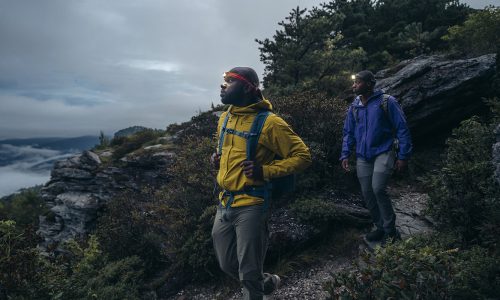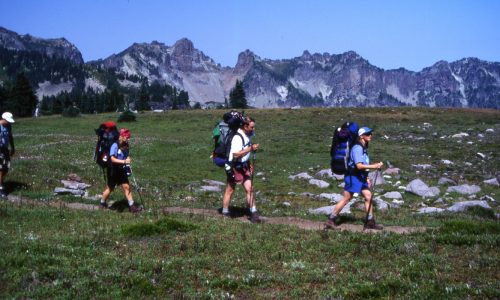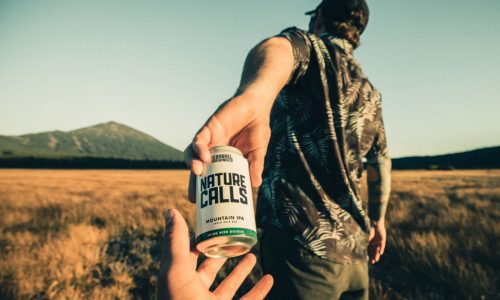Home » Gear Reviews » Climbing » Scarpa Drago
Scarpa Drago Review
May 11, 2018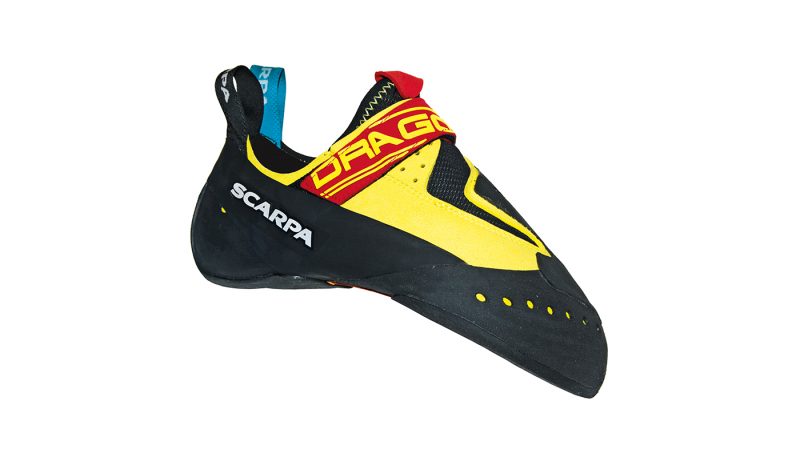















 83
83 The Good
- Incredible sensitivity
- Excellent pocket shoe
- High comfort for such a highly aggressive shoe
- Good toe hooking ability
The Bad
- Highest priced shoe in the test category
- Not designed for even casual use in cracks
- Thin outsole subject to wear through quickly
- Limited edging ability
Edging
The Scarpa Drago is a specialized shoe for overhanging routes and boulders, and the softness and extreme downturn doesn’t translate to good edging. The only situation where these characteristics combined to edge well was on micro edges, where the softness combined with the sensitivity to mold over the tiniest edge and provide feedback to garner confidence. Otherwise, the Drago isn’t a wise choice when hard edging defines the route or boulder problem.
Sensitivity
Sensitivity is where the Scarpa Drago shines; it’s a downturned slipper with a Velcro strap. The lack of a midsole combined with the relatively thin 3.5 mm of Vibram SX Grip2 rubber provides the most sensitivity in this category of shoe. The tiniest of features were felt providing confidence on dicey moves. This assurance carried over to smearing; moving off minuscule amounts of texture, even on slippery limestone or gym walls felt the most secure in the Dragos. The shoes inspired me to try to use smaller, less positive foot holds, which I could not say of any other shoe. The relatively thin sole logically may wear through faster than others, but the precise footwork these shoes reinforce may counteract some of it. These were the shoes we grabbed when the terrain was steep and we knew the footholds were anything but positive.
Toe/Heel Hooking
The Drago’s rubber toe covering extends across almost the entire upper of the shoe with only a small patch of leather exposed on the little toe side, making for ample toe hooking traction. The overall soft nature of the shoe reduces effort and improves the conformity of the upper to the toe hooking feature. The rubber is also thicker than others in this area, which trades a bit of sensitivity for comfort, giving some protection against sharp stone. Rubber also covers almost the entirety of the heel and is of moderate thickness. These characteristics combined with a snug heel fit produce heel hooking sensitivity and security.
Pockets
The pointy toe, highly asymmetrical shape, high sensitivity and moderate heel rand tension all combine to formulate the best pocket shoe in this test category. The high amount of downturn propagates this pocket mastery to the steep lines. The heel rand tension and asymmetrical last produce high power at the big toe, and the pointed shape make toeing pockets more productive than any other shoe in the test. The softness and sensitivity lend a secure feeling to the smallest of pockets, while the aggressive downturn allows efficiently pulling on pockets in roofs and steep terrain. The Drago excelled in limestone caves, in large part due to their pocket plugging and pulling abilities.
Cracks
The highly asymmetrical last and downturn of the Scarpa Drago make it a poor choice for crack climbing. The shoes are specialized for steep climbing and prove uncomfortable for the foot stances and more prolonged routes typical of crack climbing. They are usable in a pinch, particularly with finger cracks, when such a fissure sprouts up on a sport route, but that’s the extent of it’s crack climbing prowess.
Comfort/Fit
Historically, such a highly asymmetrical and downturned shoe equated to the discomfort that was the cost of high performance on steep routes. The relationship between comfort and high performance has fortunately changed over the years, and the Scarpa Drago is an excellent example of this trend. The shape and downturn are apparent when donning the shoes, and they, in turn, hold the foot in a commanding position, but relative to other shoes in the same subcategory, the Dragos was impressively comfortable. We could keep them on through several successive boulder problem attempts at the gym, and could casually untie when lowered off the cliff instead of immediately taking the shoes off. They are not comfortable on low angle terrain, but anything north of vertical, they are as comfortable as a shoe of this nature can be. The unlined, supple leather upper added conformity and generously wide toe box adds coziness. The heel is on the smaller side, which worked well for this tester, but could be tight for climbers with relatively big heels. The upper was a baggy for this tester’s low volume “duck foot,” producing bulges when the single Velcro strap was engaged but didn’t affect the performance. The sizing was spot on when matched with running shoe size after the stretching associated with unlined shoes. The Drago fits climbers with wider feet better than other shoes in the test.
Seiji specializes in climbing, but his interests have spanned a wide array of outdoor pursuits. Based in Wimberley, TX, Seiji has worked in several aspects of outdoor sports, including coaching, training, guiding, gear design, and writing. Find out more about Seiji at seijisays.com.











